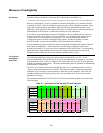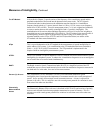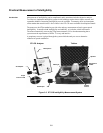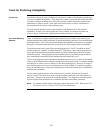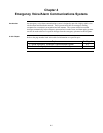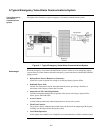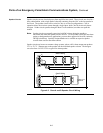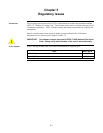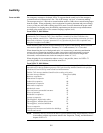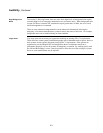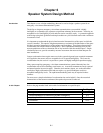
4-4
Speaker circuits convert electrical power from amplifiers into sound. These circuits are wired in a
daisy-chain fashion, with a single path of electrical continuity from the NAC to the last speaker in
the circuit. The speaker circuits can be wired in Class A or Class B configurations. Class A
operation allows the circuit to operate through a single Open, while Class B circuits only detect
the Open. Neither circuit operates through a Short Circuit condition, but either can report the
trouble.
Note: Speaker circuits are normally supervised with DC voltage during the standby or
non-alarm state when the speaker circuits are OFF. To use speaker circuits for non-alarm
paging or background music applications you must have approval of the AHJ (Authority
Having Jurisdiction). Specially designed hardware is available to supervise speaker
circuits when used for non-alarm content.
Speaker circuits are known as constant voltage systems, where a full volume output tone produce
25 V or 70.7 V. Wattage taps on the speaker sets the individual speaker volume. The designer
can select from 1/4 W to 2 W in a typical fire alarm speaker.
Class A Wiring
Speaker
Class A NAC
B+
A+
B-
A-
Class B Wiring
Class B NAC
B+
B-
End of Line
Resistor
Speaker
Speaker
Speaker
Speaker
Speaker
Figure 4-2. Class A and B Speaker Circuit Wiring
Parts of an Emergency Voice/Alarm Communications System, Continued
Speaker Circuits



